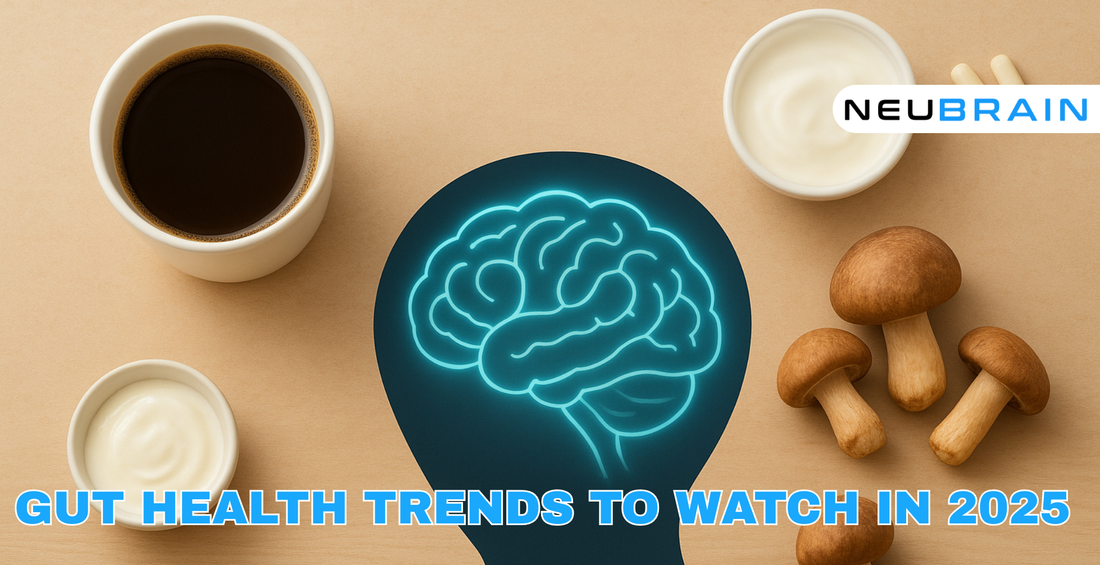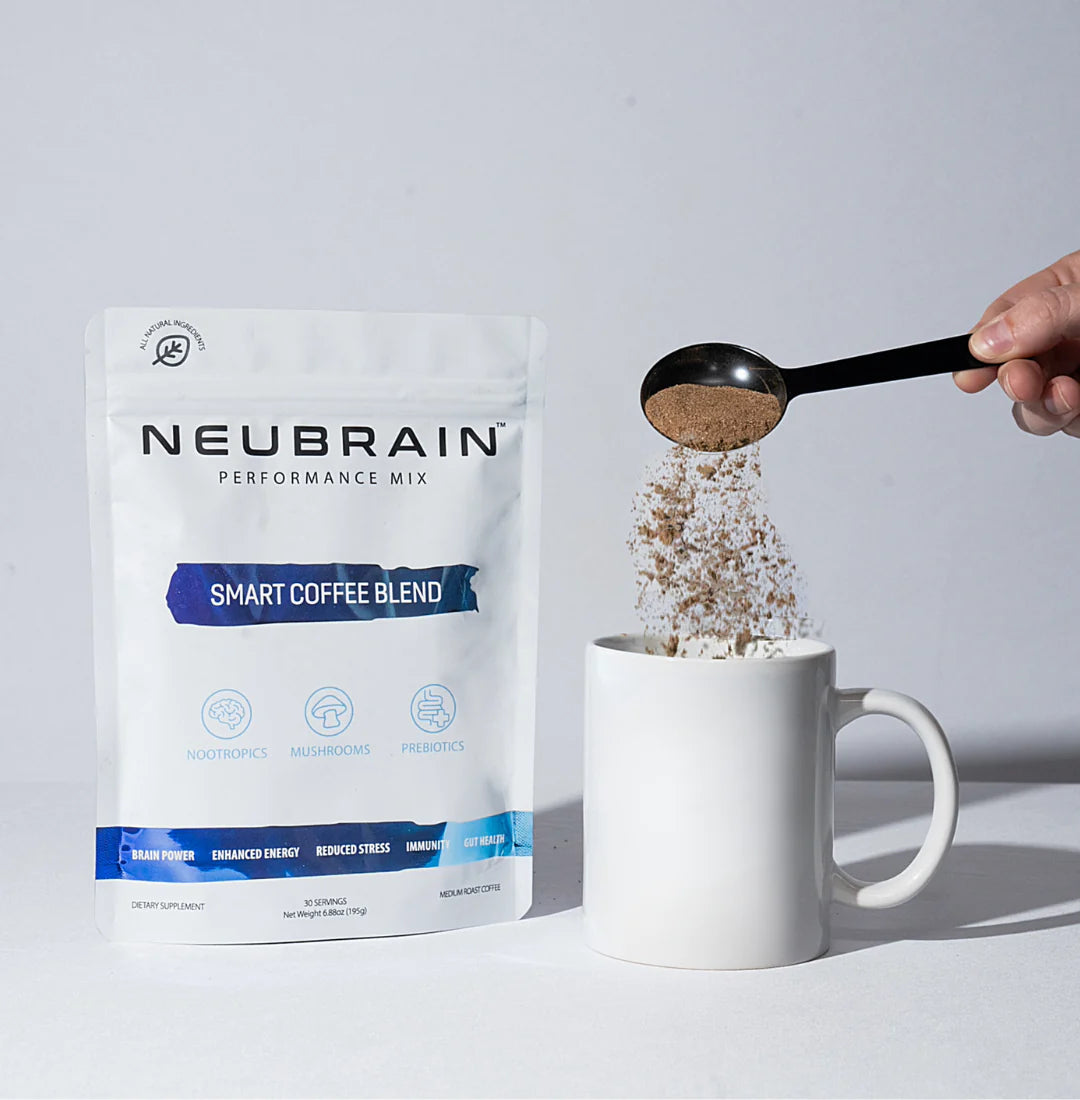Introduction
The gut and its microbiome have long been associated with digestion and gastrointestinal health. But in recent years, researchers and consumers alike have recognized that gut health intersects with immunity, metabolism, mood, skin, aging, and even cognition. As of 2025, gut health is no longer a side topic — it’s becoming central to holistic wellness and preventive medicine.
At the 13th Gut Microbiota for Health Summit in March 2025, scientists highlighted the urgent need to take microbiome research from correlative studies into clinical translation — in diagnosis, prevention, and targeted therapeutics. Gut Microbiota for Health
In this post, we’ll explore six key trends in gut health slated to accelerate in 2025, articulate their implications, and show how Neubrain can provide integrated solutions (from data systems to algorithmic modeling to decision support) to help businesses, health platforms, and consumers capitalize on these shifts.
Trend 1: Hyper-Personalized Microbiome Interventions
Trend Overview
-Consumers and clinicians are increasingly demanding personalized, strain-level interventions rather than one-size-fits-all probiotics.
-Advances in sequencing (shotgun metagenomics, strain-resolved profiling, metabolomics pairing) are enabling more precise microbiome diagnostics.
-The next frontier: therapeutic microbial consortia or engineered probiotics tailored to individual microbiome status, disease risk, or metabolic state.
-Clinical translation is accelerating: trials now often stratify by baseline microbiome, rather than treating all participants identically.
Implications & Challenges
-Benefit potential: improved efficacy, reduced side effects, and better matching of interventions to host context (e.g. diet, genetics, immune state).
-Data integration needs: multi-omics (metabolome, metagenome, host gene expression) must be fused for actionable insight.
-Regulatory complexity: living therapeutics and engineered strains may require novel regulatory frameworks.
-Scalability and cost: moving from lab to consumer scale remains nontrivial.
How Neubrain Helps
Neubrain’s platform is well positioned to support hyper-personalized gut health in several ways:
-Data ingestion & harmonization: Neubrain can ingest a variety of microbiome data sources (metagenomic, 16S, metabolomic, host phenotypic) and harmonize them for modeling.
-Predictive modeling & stratification: Using machine learning pipelines, Neubrain can build models to stratify users into responder phenotypes, predict which interventions will have most impact, and flag outliers or risk states.
-Decision support / recommendation engine: For a given individual, the platform can suggest which microbial strains, consortia, or adjuncts (prebiotics, dietary shifts) are optimal — based on predictive models and evidence weighting.
-Feedback loop & continuous learning: As users adopt interventions and new microbiome measurements come in, Neubrain can close the loop: update the individual’s model, refine predictors, and improve the system iteratively.
Trend 2: Precision Delivery & Targeted Biotics
Trend Overview
-A key limitation of many probiotic or prebiotic products is poor delivery or colonization efficiency — with many microbes failing to reach the target niche in the gut.
-In 2025, we’ll see more smart delivery systems — encapsulation, pH- or enzyme-triggered capsules, targeted release in specific gut regions (ileum, colon) are growing in prominence.
-Postbiotics (metabolites produced by beneficial microbes) and parabiotics (non-viable bacterial components) are also gaining attention because they bypass colonization challenges.
-Innovators are combining biotics with prebiotic scaffolds — e.g. synbiotics, spatial co-delivery, or layering multiple compounds for synergistic effects.
Implications & Challenges
-Better delivery can increase the effect size of biotic interventions, reduce dosage burden, and improve user adherence.
-It demands robust formulation science and in vivo validation (animal + human PK/PD).
-There is risk of off-target colonization or dysbiosis if formulations are not rigorously tested.
-Regulatory and manufacturing standardization is still maturing.
How Neubrain Helps
Neubrain can enable more precise delivery strategies by:
-Modeling spatial niches and colonization dynamics. Given baseline microbiome data, the platform can simulate which regions of the gut are least colonized or most receptive, enabling optimization of delivery location.
-Using multi-modal optimization to suggest combinations of probiotic strains plus prebiotic scaffolds plus delivery vectors that maximize colonization while minimizing adverse cross-interactions.
-Monitoring post-intervention performance (via follow-up sequencing) to refine future delivery choices.
-Enabling A/B testing frameworks within user cohorts to experimentally validate which delivery approaches yield superior outcomes.
Trend 3: Gut–Brain & Psychobiotic Integration
Trend Overview
-Interest in the gut–brain axis continues to surge. Microbiome-derived metabolites (e.g. short-chain fatty acids, tryptophan metabolites) are increasingly implicated in mood, cognition, stress, and neurological health.
-New research is delving into microglial regulation, neuroinflammation, blood–brain barrier modulation via the gut.
-Clinical trials are testing psychobiotics — probiotic strains or consortia targeting depression, anxiety, or cognitive decline.
-The gut is no longer a standalone domain — it's becoming integrated in neuropsychiatric and neurodegenerative health frameworks.
Implications & Challenges
-This opens the possibility of adjunctive treatments for depression, Alzheimer’s, Parkinson’s, or cognitive aging via gut-targeted interventions.
-Clinical endpoints are often indirect, requiring long-term follow-ups and careful placebo control.
-Inter-individual variability is high — many psychobiotic trials fail to replicate across cohorts.
-The causality chain (microbe → metabolite → neural effect) is still being elucidated.
How Neubrain Helps
Neubrain can support gut–brain integration by:
-Incorporating multi-omics biomarkers (microbiome, metabolome, neuroimaging, cognitive tests) into integrated models to connect microbial features with neural outcomes.
-Tagging candidate psychobiotic strains and monitoring their effects across cohorts, thereby enabling model-driven selection of most promising strains.
-Using causal modeling techniques (e.g. mediation analysis, structural equation models) to isolate the microbial → metabolite → neural pathway and quantify effect sizes.
-Supporting clinical trial designs with adaptive cohort allocation, predictive enrichment (i.e. pre-selecting “responder” subgroups), and ongoing learning from interim data.
Trend 4: Prebiotic Diversity & Novel Fiber Innovation
Trend Overview
-Researchers are moving beyond classical prebiotics (inulin, FOS, GOS) toward novel fiber substrates, oligosaccharide blends, and designer prebiotics tailored to feed specific taxa.
-Also rising: polyphenol–microbe synergy and plant bioactive compounds (e.g. flavonoids, resistant starches) that function as indirect prebiotics.
-There is more emphasis on prebiotic “cocktailing” (mixing fibers of different chain lengths, solubilities, glycosidic bonds) to support ecological diversity in the gut. Gut Microbiota for Health
-Food innovators and beverage brands are embedding prebiotic fibers into everyday foods (bars, drinks, snacks) to ease consumer adoption.
Implications & Challenges
-Diverse prebiotics can enhance resilience and redundancy in the gut ecosystem, reducing vulnerability to perturbations (antibiotics, diet change, illness).
-The optimal ratios and dosages are still unclear and may vary per individual.
-Tolerance (e.g. gas, bloating) is a barrier — some fibers cause GI discomfort if introduced too fast.
-Understanding cross-feeding networks and microbial interactions is essential to avoid unintended effects.
How Neubrain Helps
Neubrain’s strengths can accelerate prebiotic innovation by:
-Simulating microbial ecosystems and cross-feeding networks in silico, to predict which fiber blends will optimally nurture target taxa.
-Performing sensitivity analyses to assess how changes in fiber composition shift microbial community structure, diversity, and metabolite output.
-Tracking real-world user responses (microbiome shifts, symptom diaries) and feeding that back into the fiber recommendation engine to refine personalized dosing.
Trend 5: Multi-Biome Integration (Oral, Skin, Vaginal, Beyond)
Trend Overview
-Consumers and researchers are broadening their view: the oral, skin, vaginal, nasal, and lung microbiomes are increasingly seen as interconnected with gut health.
-Cross-biome interventions (e.g. oral probiotics influencing gut, or gut microbes affecting skin condition) are emerging.
-Products with multi-tract targeting (skin + gut, oral + gut) are becoming more common in consumer wellness lines. FoodNavigator.com
-The idea of a total-body microbiome map is gaining traction — where one examines multiple microbiome niches per individual to design holistic interventions.
Implications & Challenges
-Multi-biome integration expands therapeutic opportunity (e.g. skin conditions, oral diseases, vaginal dysbiosis) but also increases complexity.
-Sampling, standardization, and data harmonization across biome types is nontrivial.
-Causality and directionality among biomes are still under investigation.
How Neubrain Helps
Neubrain can integrate multi-biome strategies by:
-Supporting multi-niche data ingestion, so oral, skin, vaginal microbiome data can be harmonized alongside gut metrics.
-Modeling cross-biome influence (e.g. how oral microbial shifts may influence gut via swallowed bacteria or metabolites).
-Enabling holistic intervention planning — e.g. recommending dual-target probiotics or synbiotics that benefit both skin and gut.
-Providing unified dashboards and reports for end users or clinicians to view the interconnected microbiomes and monitor interventions holistically.
Trend 6: Microbiome Diagnostics, Risk Prediction & Preventive Microbiomics
Trend Overview
-As gut health becomes central to wellness, demand is growing for predictive diagnostics — i.e. assessing disease risk (metabolic syndrome, IBD, colorectal cancer) from baseline microbiome signatures.
-Diagnostic companies increasingly combine microbiome data with other biomarkers (blood markers, genetics, metabolites) for more robust risk stratification.
-The microbiome diagnostic market is set to expand rapidly — the digestive health product market is already valued at ~$51.6 billion (2024) and continuing growth is expected.
-Some early microbiome-based therapeutics are already navigating regulatory approval frameworks, allowing for test-to-treatment pipelines. Gut Microbiota for Health
Implications & Challenges
-Precise risk prediction can enable early interventions, prevention, and personalized monitoring, rather than reactive treatment.
-False positives/negatives and overdiagnosis are real risks; models must be rigorously validated.
-Longitudinal stability and intra-individual variability of microbiome signatures can complicate prediction.
-Ethical, privacy, and regulatory frameworks must evolve to protect personal microbiome data.
How Neubrain Helps
Neubrain can serve as a backbone for microbiome diagnostics by:
-Supporting predictive risk modeling pipelines, integrating microbiome features with clinical and lifestyle data to generate risk scores.
-Implementing ensemble or stacked models to reduce overfitting and improve generalization.
-Facilitating longitudinal tracking and flagging deviations from baseline that warrant early intervention.
-Powering test-to-treatment linking: once a risk is flagged, Neubrain can recommend targeted interventions (e.g. dietary, probiotic, prebiotic) and track outcomes — closing the loop in preventive microbiomics.
Synthesis & Strategic Recommendations
In 2025 and beyond, gut health will be less about general wellness claims and more about precision, feedback-driven, multi-domain interventions. The lines between diagnostics, therapeutics, nutrition, neurology, and cosmetic or skin health will blur, as the microbiome becomes a shared axis across many systems.
Here are some strategy-level recommendations for organizations and innovators looking to operate in this space:
-Build integrated data platforms first — the ones who can bring metagenomics, metabolomics, host phenotypes, clinical outcomes, and behavioral data under one roof will win.
-Prioritize model interpretability and validation, not just black-box performance. Stakeholders (clinicians, regulators) demand clarity on why a recommendation is made.
-Design for feedback loops from day one — adopt trial-native architectures where each user’s intervention outcome becomes new training data.
-Embrace modularity and APIs — elements such as a probiotic recommendation engine, fiber optimizer, or diagnostic classifier should be modular so partners can plug in.
-Foster partnerships across domains — align with diagnostics labs, supplement/formulation companies, clinicians, consumer wellness platforms, and regulatory bodies to create a cohesive ecosystem.
And that’s where Neubrain stands out: we provide the technical backbone, algorithmic infrastructure, model management, and decision support capabilities that let organizations focus on domain knowledge (e.g. formulation, clinical protocols) rather than rebuilding data infrastructure from scratch.








